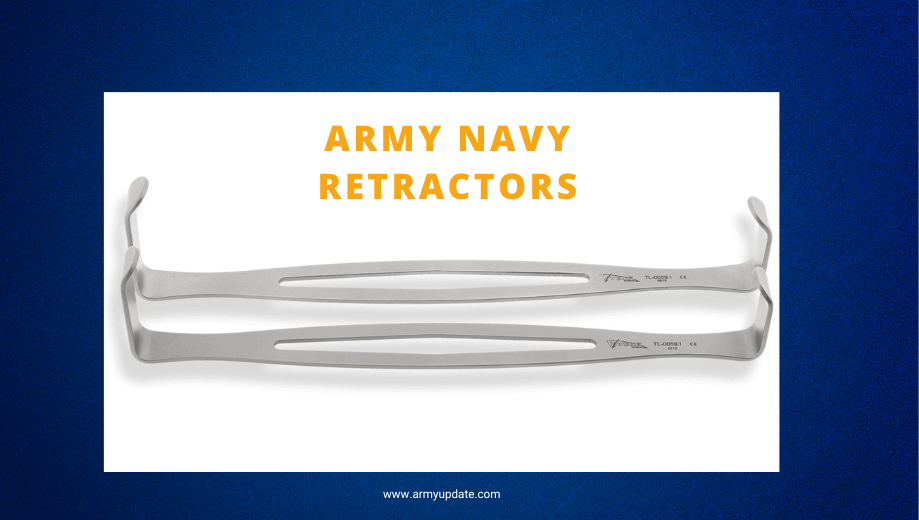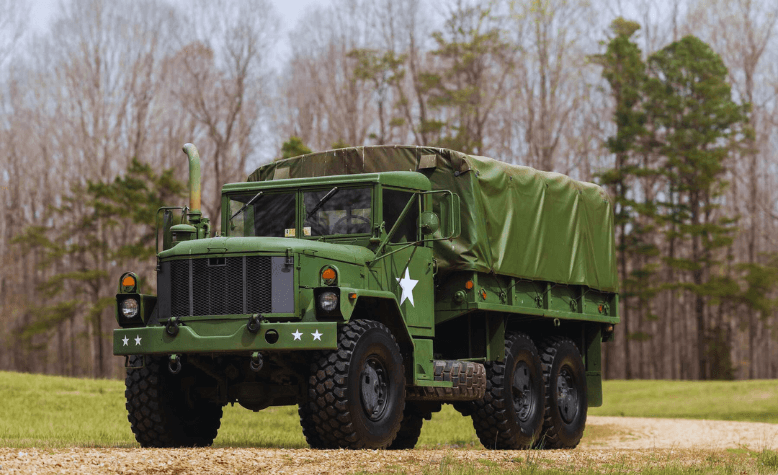Army Navy Retractors: Navigating the World of Precision Surgery

How many of you have heard of the Army Navy retractor? For those in the medical field, it may be a familiar tool. But for others, it’s a new term. Not quite new but I guess, you guys are just trying your hardest to get the most important information so that you can use it right.
Well, being a student of a science background and having friends in the medical occupation, I must say that understanding it properly can be quite beneficial. That’s what I did.
I ask my close friend who is a surgeon to give me an overview of the retractor. And let me tell you, it’s quite a complicated but easy-to-use tool. But wait, not quite EASY as it sounds!!
So, today I am going to share what my friend taught me and what insights have I gotten from researching on my own. I will talk about what it is, and its history first. Then I will dive into the use cases, design, safety measures, and processes. Isn’t it going to be the only guide one may need to read about Army Navy surgical retractors?
Why Is It Called Army Navy Retractor
I am not going to start a debate between the Army and Navy as the name is weird enough – Army Navy Retractor! I mean why not only the Army, or Navy? Just kidding.
So about the name, one article suggests that as these retractors are so tough and durable like the soldiers in the army and navy, they were named Army Navy retractors. If that’s so, this name actually suits it.
But again, as the US Army first used these retractors during wartime surgeries, it is believed that they were initially developed for military use and later adopted by the Navy as well. Hence, that’s how the name was developed!

Use of Army Navy Retractors in Medical Procedures
Let’s now deep down into the use of Army Navy retractors in medical procedures. I have found that these versatile instruments are commonly used in a variety of surgical things, including
1) General surgery
2) Orthopedics
3) Neurosurgery and
4) Plastic surgery.
Their primary function is to hold back tissues or organs during an operation. This helps expose the surgical site and provides better visualization for the surgeon.
While retracting soft tissues like skin or muscles, Army Navy retractors are particularly useful in procedures like wound closure, where they help to hold open the incision.
In neurosurgery, they help in retracting delicate brain tissue to access the affected area.
The uses of a retractor army navy are vast, to be honest. However, let’s talk about its other aspects below.
How to Properly Use an Army Navy Retractor
After all the uses I have mentioned above, don’t just take the retractor and rush into using it without proper knowledge. Please! You are still missing the important part of how to use a retractor properly.
Besides the Army Navy, there are a few more categorized retractors commonly used in surgery. Such as Malleable retractors, Senn retractors, Deaver and etc.
Army Navy retractors are specially used for holding back tissues or organs during surgery. To properly use an Army Navy retractor, follow these steps:
- Sterilize the retractor before use to prevent infection.
- Select the appropriate size of retractor based on the surgical site and tissue being retracted.
- Position the retractor blades on either side of the tissue or organ to be held back.
- This part is important. Gently apply pressure to hold the tissue or organ in place.
- Adjust the angle and depth of the retractor as needed for more suitable visualization.
- Always handle with care to avoid any damage to the tissues.
Again, you should not test this if you haven’t learned it practically from a qualified medical professional. It’s important to have proper training and guidance. Trust me, your mistake will have serious consequences.
Design and Specifications Of An Army Navy Retractor
Now let’s talk about the design, material, specifications, and others. Do you have a retractor around you right now? Take it and try to observe its design.
You will see the retractor also known as US retractor typically consists of two curved blades that are flexible and can be adjusted as needed. The blades are designed to gently hold back tissues. Wait, let me break it down for you:
Design: Normally the instrument is double-ended of 8-1/4″ and the handle is fenestrated. Its design allows for easy manipulation and positioning of the retractor blades.
Material: Army Navy retractors are usually made of stainless steel. Why? Because that makes them durable and easy to sterilize.
Specifications: The blades of the retractor are curved with a slight taper at the end, I hope you can see this too. This is for better tissue manipulation as I told you above. The retractor is also available in various sizes to accommodate different surgical needs.
Blades: Its blades are angled to 90 degrees which can also have a serrated surface to provide a secure grip on the tissue without causing damage.
Safety Measures To Take Before Using A Refractor
All explanation is done! I thought this too and thanked my medical friend. But then he stopped me and said “Why so hurry!”
After that, he told me I was missing the safety measures as I am a nonmedical background person so it’s a must-know for me.
So, here is what he advised me:
Training: Too often in our house, we neglect the importance of training before using any medical instrument. It is crucial to undergo proper training and instruction on how to use the tool safely and effectively.
Cleaning: Proper cleaning and sterilization of the retractor before and after each use is another essential thing to do. This is to prevent infections and ensure patient safety.
Handling: Also, wear appropriate personal protective equipment, such as gloves, when using the instrument to minimize the risk of contamination.
Storage: Proper storage of the retractor is also very important to maintain its integrity and prevent damage. Store it in a clean and dry environment.
Inspection: Before each use, inspect the retractor for any signs of damage.
Conclusion
That’s it for the guide about the Army Navy retractor. I tried my best to include a-z information about this surgical instrument. I know, you will get a better understanding of it when you do it practically.
All the basic has been discussed. Just don’t stop learning about US Army retractors from here.
You need to continue exploring and researching different types of retractors used in the medical field. Each retractor serves a specific purpose and understanding their functions will enhance your knowledge and skills.







